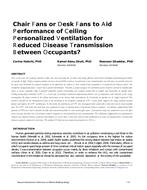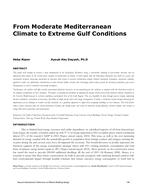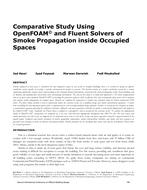-
-
Available Formats
- Options
- Availability
- Priced From ( in USD )
-
Available Formats
-
- Immediate download
-
$16.00Members pay $7.00
- Add to Cart
Customers Who Bought This Also Bought
-

Chair Fans or Desk Fans to Aid Performance of Ceiling Per...
Priced From $16.00 -

From Moderate Mediterranean Climate to Extreme Gulf Condi...
Priced From $16.00 -

Comparative Study Using OpenFOAM© and Fluent Solvers of S...
Priced From $16.00 -

Validation of Key Performance Parameters for Low Carbon B...
Priced From $16.00
About This Item
Full Description
Since 2005 a number of publications have proposed different U-values to be used in Lebanon in order to reduce the buildings’ energy demand for cooling and heating. This research considers those different values from the two editions of the Thermal Standard for Buildings in Lebanon (2005 & 2010) and Lebanon Center for Energy Conservation LCEC guidelines (2014), in addition to recommended U-values from similar worldwide climates. In the second part of the paper, dynamic thermal simulation software (EDSL TAS) is used to test the proposed U-values in conjunction with typical local construction materials and using Bayrouth weather files (Meteonorm 7). The tridimensional model used for the simulations is based on a typical existing building with characteristics kept constant throughout the comparative study. Furthermore the same internal heat gains and patterns for occupancy and appliances, as well as window opening areas and schedules are also kept the same in all the simulations. For each case, the four main cardinal orientations are tested. The research compares the overall yearly energy demand for mechanically heated and cooled buildings, in order to assess which U-values will give the lowest energy demand under varying levels of internal heat gains.





